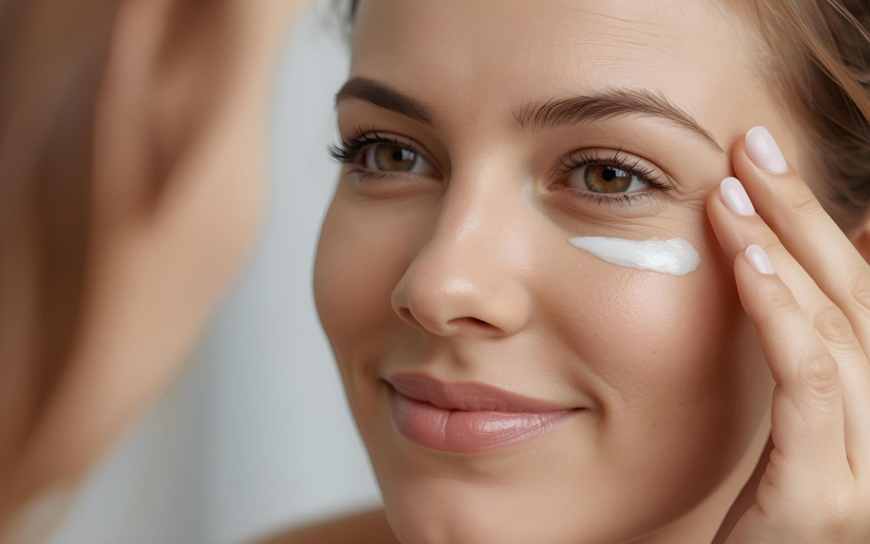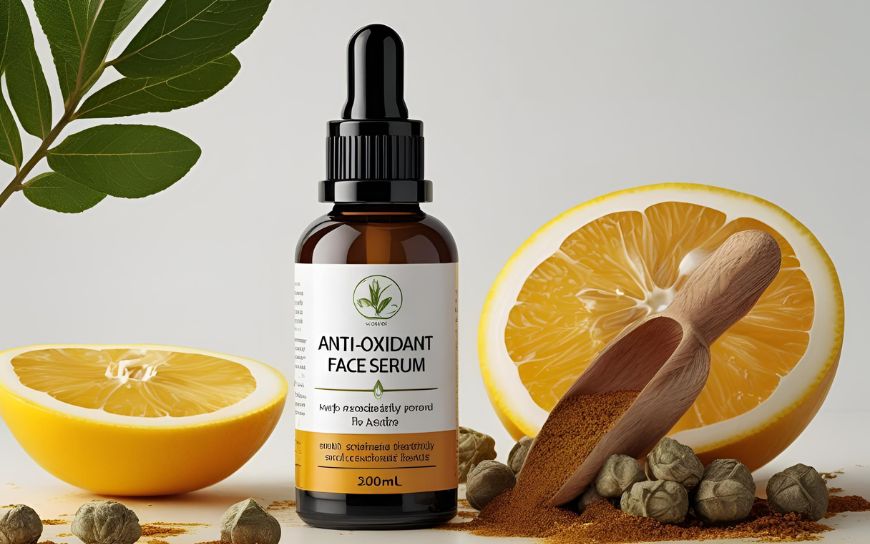
Healthy and glowing skin is irresistible but also a goal you might find hard to achieve. The beauty industry is here to help you but remember: you might have the best skincare products, but if you don’t apply them in the right order, you won’t get their full benefits.
This is a guide to help you build your skincare routine step-by-step and get the best results out of it.
Step 1 - Cleansing
Cleansing is a very important step and you should never ever skip it. It always comes first and prepares your skin for the rest of your skincare routine: the products you apply next will be able to get absorbed.
Tip: For your basic morning routine use a foam cleanser or a gel cleanser to remove residue that has built up overnight. For your nighttime routine use an oil cleanser, a micellar water, or a classic makeup remover to remove dirt, pollution, and traces of make-up and sunscreen.
Extra step – Exfoliation
Exfoliation should be done 1-2 times a week. This process removes dead cells and keeps your skin looking healthy. Dead cells cause dullness and can also clog your pores preventing active ingredients from penetrating into your skin. Face scrubs expose healthy cells and regenerate your skin.
Tip: It is preferable to use face scrubs at night since they can cause temporary redness. It is also important not to use scrubs that are very harsh, as they can cause irritations on your skin.
Step 2 – Toning
Adding a toner to your routine ensures that your skin is clean and its pH level is balanced. You can consider toning as the last part of the cleansing process. Toners can remove all the little things missed by your cleanser. Furthermore, toners tighten pores, even out your complexion, and give the skin the extra hydration needed before applying the next layer.
Tip: Spritz your toner and allow your face to dry naturally. If you are in a hurry, you can use an organic cotton pad to apply your toner.
Extra step – Essence/Spot treatment/Mask
- Essence
Essences are concentrated formulas that usually contain active ingredients and provide a more targeted treatment (wrinkles, fine lines, uneven skin texture). Creamier than toners, more lightweight than serums, essences serve as an additional layer of hydration, they penetrate the skin deeply and enhance the effectiveness of the next products.
Tip: When it comes to application, treat essences like serums: place a small amount of essence on your fingertips and gently pat it into the skin. Do not use cotton rounds.
- Spot treatment
Spot treatments are products you need if you want to get rid of individual spots, pimples, or blemishes and should be applied only on small areas rather than used over the entire face. They only work on pimples already visible and do not prevent forming. This means that if you have a severe acne problem, spot treatments won't clear up your skin and you should follow a different type of treatment routine.
Tip: Use your spot treatment twice a day. Overuse can cause dryness and irritation.
- Mask
There are different kinds of masks: cream masks, sheet masks, clay masks, masks with activated charcoal, etc. When choosing one, you need
a) to know your skin type and
b) to determine the benefit you are looking for
For example, if it is wintertime and you have dry skin, you should look for a cream mask that offers extra hydration. It would be a really bad idea to use a green clay mask for oily skin as it would dehydrate your skin even more.
Tip: Apply a face mask 1-2 times a week.
Step 3 – Serum
Serums are usually very lightweight and can be easily absorbed. They contain high concentrations of powerful ingredients, such as antioxidants and hyaluronic acid, and provide targeted results. They reduce fine lines and offer elasticity and firming.
Tip: If you’re new to serums, then you should avoid using them every day, as they may irritate your skin. In the beginning, apply the serum once every other day.
Step 4 – Eye Cream
The skin around the eyes is thinner and more delicate than the skin on the rest of your face. Eye creams are products that are formulated specifically for this sensitive area. They may contain the same ingredients as moisturizers but at lower doses that are not too strong for this area and do not cause irritations. This way the thin skin around the eyes absorbs better and the active ingredients needed are delivered.
Tip: Apply your eye cream with gentle tapping motions and avoid rubbing.
Step 5 – Moisturizer
Face moisturizers are necessary in every skincare regimen. They nurture and protect your skin while providing the necessary moisture. There are big differences between day and night face creams: The main function of daily face cream is to protect your skin from harmful external influences and that’s why most daily face creams contain antioxidants and provide basic UV protection. The basic function of a night cream, on the other hand, is to repair your skin, provide an anti-aging effect, and deep hydration. That’s why most night creams contain regenerative and hydrating ingredients, such as retinol, hyaluronic acid, and vitamin C. Daily face creams are light while night creams have a heavy and rich texture.
Tip: It is very important not to use daily cream during the night and night cream during the day, as they have completely different roles. Their formulas cover the different needs your skin has during day and night and not using them properly is useless.
Step 6
Sunscreen (Day routine)
Even if your daily face cream provides some sun protection, it is usually insufficient. Sunscreen protects the skin from damaging sun rays and harmful radiation and applying it every day is a very important health care habit. Furthermore, by wearing sunscreen you slow down the formation of wrinkles, fine lines, and other symptoms of premature skin aging and keep your skin tone even, as sunscreen prevents skin discolorations and brown spots.
Tip: Wear sunscreen even on cloudy days and make sure that it has an SPF of at least 15.
Facial Oil (Night routine)
Facial oils can be very beneficial and are best used in combination with other moisturizing products. You should avoid using them as moisturizers though. Their molecular weight is too big and they cannot penetrate deeply and since they don’t contain any water, they do not moisturize your skin the way a typical face cream does. Facial oils are perfect to support your moisturizer as they help to seal in moisture and so by using them last, you’re locking in the rest of your skincare routine.
Tip: As it’s difficult to apply your sunscreen on an oily surface, it is recommended to use facial oils at night.

General Tips
- Take your time and let each product absorb before applying the next one.
- Apply the most lightweight formulas first - layer products from thinnest to thickest.
- You don’t necessarily have to use all these products. Everyone’s skin is different, so this is a general guide. All you have to do is adjust it to your personal needs.
- Know what your skin type is and be aware that it may change from season to season and over the years. Get to understand your skin’s needs and find the right products.
- Never neglect your neck. It should be treated as an extension of your face.
- Last but not least: live a healthy life (sleep well, avoid junk food, drink a lot of water, quit smoking, exercise regularly)


